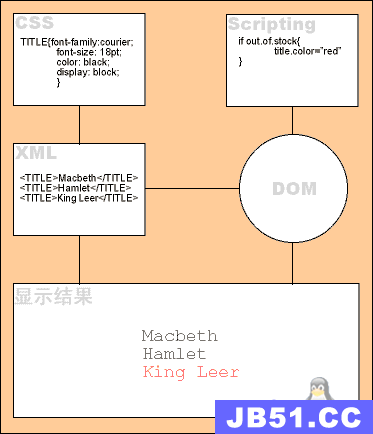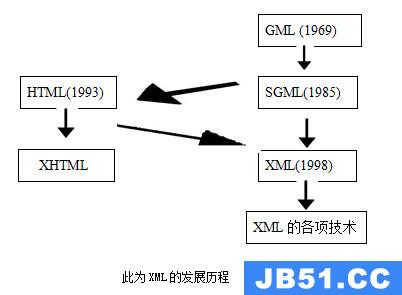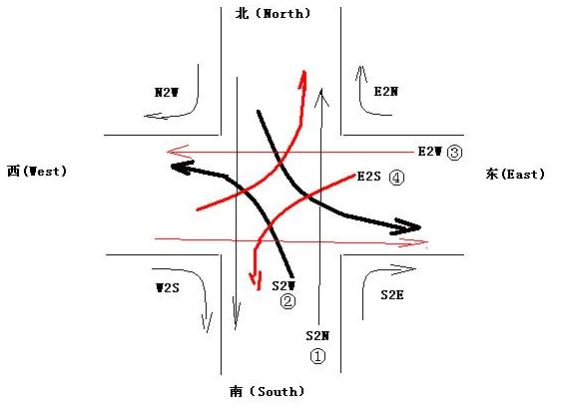- 首先要知道另一个东西,default-autowire,它是在xml文件中进行配置的,可以设置为byName、byType、constructor和autodetect;比如byName,不用显式的在bean中写出依赖的对象,它会自动的匹配其它bean中id名与本bean的set**相同的,并自动装载。
- @Autowired是用在JavaBean中的注解,通过byType形式,用来给指定的字段或方法注入所需的外部资源。
- 两者的功能是一样的,就是能减少或者消除属性或构造器参数的设置,只是配置地方不一样而已。
- autowire四种模式的区别:
先看一下bean实例化和@Autowired装配过程:
一切都是从bean工厂的getBean方法开始的,一旦该方法调用总会返回一个bean实例,无论当前是否存在,不存在就实例化一个并装配,否则直接返回。(Spring MVC是在什么时候开始执行bean的实例化过程的呢?很简单就在组件扫描完成之后)
Spring几乎考虑了所有可能性,所以方法特别复杂但完整有条理。
@Autowired最终是根据类型来查找和装配元素的,但是我们设置了
<beans default-autowire="byName"/>后会影响最终的类型匹配查找。因为在前面有根据BeanDeFinition的autowire类型设置PropertyValue值得一步,其中会有新实例的创建和注册。就是那个autowireByName方法。
下面通过@Autowired来说明一下用法
Setter 方法中的 @Autowired
你可以在 JavaBean中的 setter 方法中使用 @Autowired 注解。当 Spring遇到一个在 setter 方法中使用的 @Autowired 注解,它会在方法中执行 byType 自动装配。
这里是 TextEditor.java 文件的内容:
package com.tutorialspoint;
import org.springframework.beans.factory.annotation.Autowired;
public class TextEditor {
private SpellChecker spellChecker;
@Autowired
public void setSpellChecker( SpellChecker spellChecker ){
this.spellChecker = spellChecker;
}
public SpellChecker getSpellChecker( ) {
return spellChecker;
}
public void spellCheck() {
spellChecker.checkSpelling();
}
}
下面是另一个依赖的类文件 SpellChecker.java 的内容:
package com.tutorialspoint;
public class SpellChecker {
public SpellChecker(){
System.out.println("Inside SpellChecker constructor." );
}
public void checkSpelling(){
System.out.println("Inside checkSpelling." );
}
}
package com.tutorialspoint;
import org.springframework.context.ApplicationContext;
import org.springframework.context.support.ClasspathXmlApplicationContext;
public class MainApp {
public static void main(String[] args) {
ApplicationContext context = new ClasspathXmlApplicationContext("Beans.xml");
TextEditor te = (TextEditor) context.getBean("textEditor");
te.spellCheck();
}
}
下面是配置文件 Beans.xml:
<?xml version="1.0" encoding="UTF-8"?>
<beans xmlns="http://www.springframework.org/schema/beans" xmlns:xsi="http://www.w3.org/2001/XMLSchema-instance" xmlns:context="http://www.springframework.org/schema/context" xsi:schemaLocation="http://www.springframework.org/schema/beans http://www.springframework.org/schema/beans/spring-beans-3.0.xsd http://www.springframework.org/schema/context http://www.springframework.org/schema/context/spring-context-3.0.xsd">
<context:annotation-config/>
<!-- DeFinition for textEditor bean without constructor-arg -->
<bean id="textEditor" class="com.tutorialspoint.TextEditor">
</bean>
<!-- DeFinition for spellChecker bean -->
<bean id="spellChecker" class="com.tutorialspoint.SpellChecker">
</bean>
</beans>
一旦你已经完成的创建了源文件和 bean 配置文件,让我们运行一下应用程序。如果你的应用程序一切都正常的话,这将会输出以下消息:
Inside SpellChecker constructor.
Inside checkSpelling.
- 属性中的 @Autowired
你可以在属性中使用 @Autowired 注解来除去 setter 方法。当时使用 为自动连接属性传递的时候,Spring 会将这些传递过来的值或者引用自动分配给那些属性。所以利用在属性中 @Autowired 的用法,你的 TextEditor.java 文件将变成如下所示:
package com.tutorialspoint;
import org.springframework.beans.factory.annotation.Autowired;
public class TextEditor {
@Autowired
private SpellChecker spellChecker;
public TextEditor() {
System.out.println("Inside TextEditor constructor." );
}
public SpellChecker getSpellChecker( ){
return spellChecker;
}
public void spellCheck(){
spellChecker.checkSpelling();
}
}
下面是配置文件 Beans.xml:
<?xml version="1.0" encoding="UTF-8"?>
<beans xmlns="http://www.springframework.org/schema/beans" xmlns:xsi="http://www.w3.org/2001/XMLSchema-instance" xmlns:context="http://www.springframework.org/schema/context" xsi:schemaLocation="http://www.springframework.org/schema/beans http://www.springframework.org/schema/beans/spring-beans-3.0.xsd http://www.springframework.org/schema/context http://www.springframework.org/schema/context/spring-context-3.0.xsd">
<context:annotation-config/>
<!-- DeFinition for textEditor bean -->
<bean id="textEditor" class="com.tutorialspoint.TextEditor">
</bean>
<!-- DeFinition for spellChecker bean -->
<bean id="spellChecker" class="com.tutorialspoint.SpellChecker">
</bean>
</beans>
一旦你在源文件和 bean 配置文件中完成了上面两处改变,让我们运行一下应用程序。如果你的应用程序一切都正常的话,这将会输出以下消息:
Inside TextEditor constructor.
Inside SpellChecker constructor.
Inside checkSpelling.
- 构造函数中的 @Autowired
你也可以在构造函数中使用 @Autowired。一个构造函数 @Autowired 说明当创建 bean 时,即使在 XML 文件中没有使用 元素配置 bean ,构造函数也会被自动连接。让我们检查一下下面的示例。
package com.tutorialspoint;
import org.springframework.beans.factory.annotation.Autowired;
public class TextEditor {
private SpellChecker spellChecker;
@Autowired
public TextEditor(SpellChecker spellChecker){
System.out.println("Inside TextEditor constructor." );
this.spellChecker = spellChecker;
}
public void spellCheck(){
spellChecker.checkSpelling();
}
}
下面是配置文件 Beans.xml:
<?xml version="1.0" encoding="UTF-8"?>
<beans xmlns="http://www.springframework.org/schema/beans" xmlns:xsi="http://www.w3.org/2001/XMLSchema-instance" xmlns:context="http://www.springframework.org/schema/context" xsi:schemaLocation="http://www.springframework.org/schema/beans http://www.springframework.org/schema/beans/spring-beans-3.0.xsd http://www.springframework.org/schema/context http://www.springframework.org/schema/context/spring-context-3.0.xsd">
<context:annotation-config/>
<!-- DeFinition for textEditor bean without constructor-arg -->
<bean id="textEditor" class="com.tutorialspoint.TextEditor">
</bean>
<!-- DeFinition for spellChecker bean -->
<bean id="spellChecker" class="com.tutorialspoint.SpellChecker">
</bean>
</beans>
一旦你在源文件和 bean 配置文件中完成了上面两处改变,让我们运行一下应用程序。如果你的应用程序一切都正常的话,这将会输出以下消息:
Inside TextEditor constructor.
Inside SpellChecker constructor.
Inside checkSpelling.
- @Autowired 的(required=false)选项
默认情况下,@Autowired 注解意味着依赖是必须的,它类似于 @required 注解,然而,你可以使用 @Autowired 的 (required=false) 选项关闭默认行为。
即使你不为 age 属性传递任何参数,下面的示例也会成功运行,但是对于 name 属性则需要一个参数。你可以自己尝试一下这个示例,因为除了只有 Student.java 文件被修改以外,它和 @required 注解示例是相似的。
package com.tutorialspoint;
import org.springframework.beans.factory.annotation.Autowired;
public class Student {
private Integer age;
private String name;
@Autowired(required=false)
public void setAge(Integer age) {
this.age = age;
}
public Integer getAge() {
return age;
}
@Autowired
public void setName(String name) {
this.name = name;
}
public String getName() {
return name;
}
}
Quote:
http://my.oschina.net/HeliosFly/blog/203902
http://wiki.jikexueyuan.com/project/spring/annotation-based-configuration/spring-autowired-annotation.html
版权声明:本文内容由互联网用户自发贡献,该文观点与技术仅代表作者本人。本站仅提供信息存储空间服务,不拥有所有权,不承担相关法律责任。如发现本站有涉嫌侵权/违法违规的内容, 请发送邮件至 dio@foxmail.com 举报,一经查实,本站将立刻删除。




